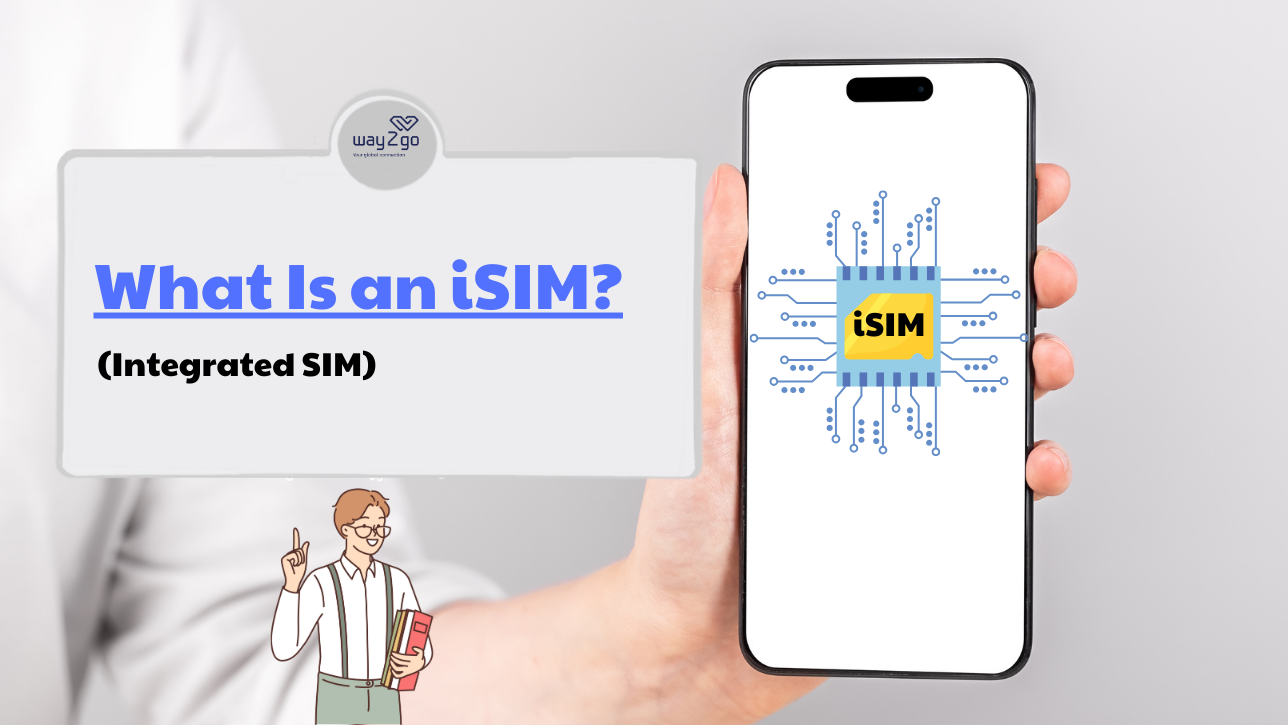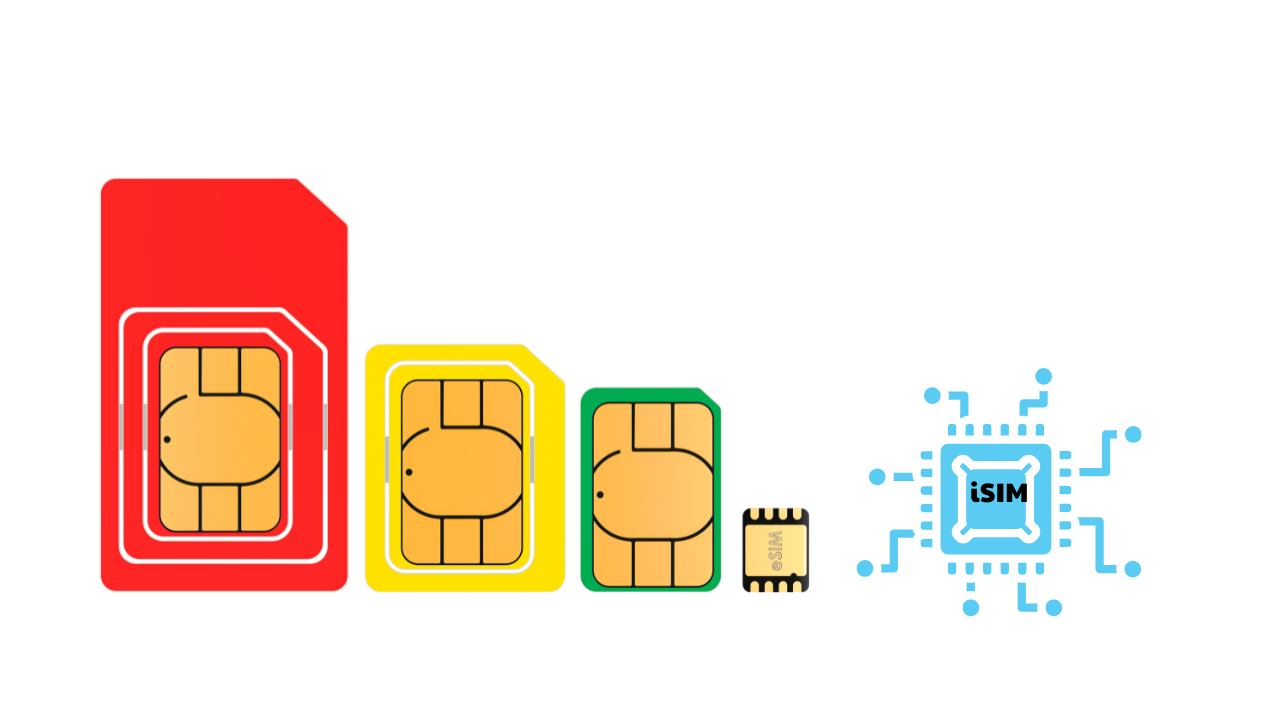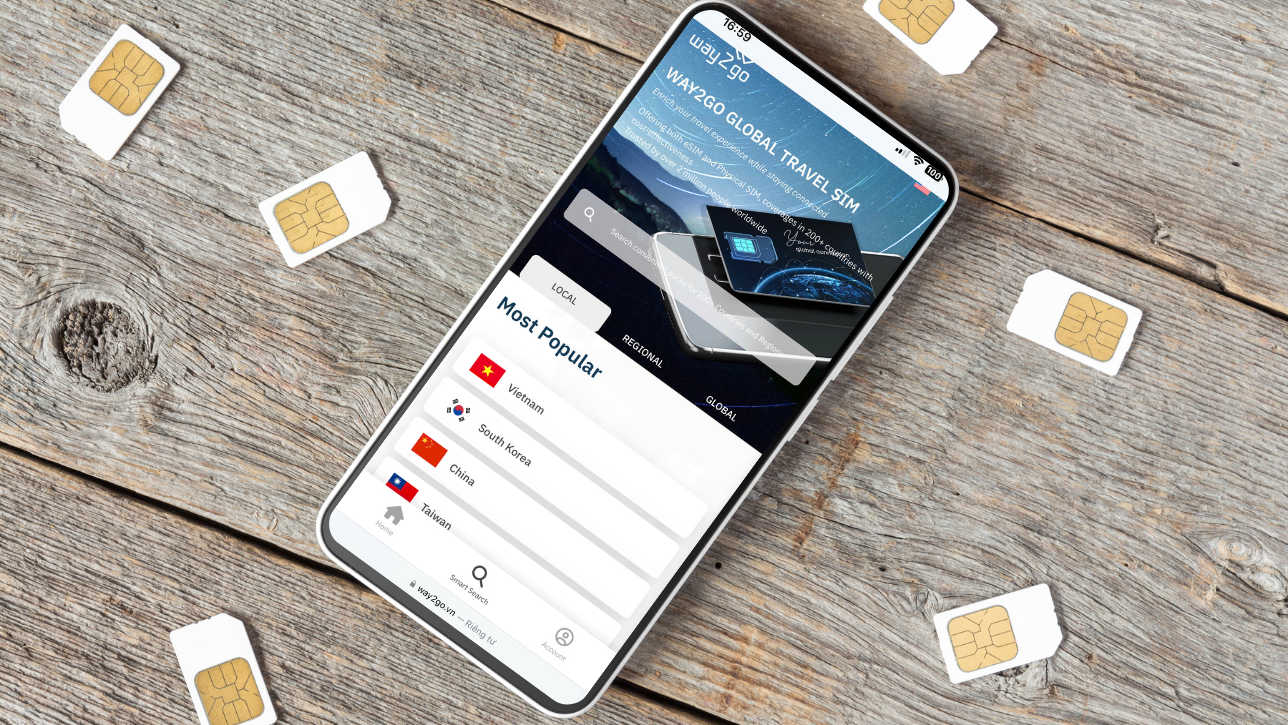
Mobile technology is continuously evolving, from traditional SIM cards to embedded SIM (eSIM) and now to the latest innovation: iSIM technology. This advancement is revolutionizing how devices connect to cellular networks, offering greater efficiency, enhanced security, and a more compact design. But what exactly is iSIM, and how does it compare to eSIM technology? This article by Way2go helps you understand what iSIM is, how it works, and why this technology is expected to replace traditional connectivity methods.

What is iSIM?
iSIM (Integrated Subscriber Identity Module) is an advanced form of SIM technology that is directly integrated into a device’s main processor or chipset. Unlike eSIM, which is embedded as a separate chip on the motherboard, iSIM eliminates the need for additional hardware.
This means that iSIM technology not only reduces the space required for network connectivity but also enhances security and efficiency. Mobile carriers can remotely provision and manage iSIM-enabled devices without requiring physical SIM swaps or additional chips.

How iSIM technology works
iSIM technology represents a significant advancement in mobile and IoT connectivity. Unlike traditional SIM cards or even embedded SIMs (eSIMs), iSIM is directly integrated into the device’s System-on-Chip (SoC). This means that the SIM functionality is embedded within the device’s primary processor, allowing seamless interaction between the SIM and the operating system. This integration brings several benefits:
Remote activation and management: One of the major advantages of iSIM is its ability to be remotely provisioned and managed. Through over-the-air (OTA) programming, mobile network operators (MNOs) can activate, update, or switch network profiles without requiring a physical SIM card or even a separate eSIM module. This makes connectivity more flexible and scalable for consumers and businesses alike.
Enhanced security: Security is a key concern for mobile communications, and iSIM offers superior protection. Since it is embedded into the device’s main chipset rather than being a removable component, it is much harder to tamper with or clone. Additionally, iSIM benefits from the security infrastructure of the device’s SoC, which often includes hardware-based encryption and secure storage.
Lower power consumption: Traditional SIM cards and even eSIMs consume power during network authentication and data transactions. iSIM, being an integrated component, is optimized for power efficiency, making it particularly beneficial for battery-operated devices such as smartwatches, fitness trackers, and IoT sensors that require long battery life.
More space for other components: Since iSIM is integrated into the chipset, it eliminates the need for a separate SIM card slot or an eSIM module. This allows manufacturers to create smaller, more compact devices without compromising performance. The freed-up space can be utilized for larger batteries, additional sensors, or improved thermal management.

iSIM technology in modern devices
iSIM is still in its early stages, but its adoption is rapidly growing across various sectors. Leading technology companies are exploring its potential to enhance connectivity in several types of devices. Some applications of iSIM include:
Smartphones: Major smartphone manufacturers like Qualcomm and Samsung are actively integrating iSIM technology into their flagship models. By replacing physical SIM cards with iSIM, future smartphones could be slimmer, more secure, and more energy-efficient.
IoT Devices: The Internet of Things (IoT) heavily relies on efficient, low-power connectivity. iSIM is ideal for smart home devices, industrial IoT applications, and medical technology, where space-saving and long battery life are crucial. Remote provisioning also simplifies mass deployment in industries like agriculture, logistics, and asset tracking.
Laptops and Tablets: With the growing need for always-connected devices, laptops and tablets with built-in LTE or 5G connectivity can benefit from iSIM. Users will no longer need to insert a SIM card manually, and network switching can be done effortlessly via software updates.
Smartwatches and Wearables: Wearable devices are becoming more powerful and feature-rich, but space constraints remain a challenge. iSIM enables thinner and sleeker smartwatch designs without sacrificing connectivity. Additionally, the lower power consumption ensures longer battery life, which is critical for fitness trackers and other wearables.
As iSIM adoption increases, it is expected to become the standard for connected devices across various industries.

Advantages and disadvantages of iSIM
Advantages of iSIM over eSIM and traditional SIM
iSIM technology provides several major benefits compared to eSIM and traditional SIM cards:
Seamless connectivity: No need for manual SIM swaps or extra chips - just activate and go.
Increased device security: Since iSIM is embedded into the processor, it is harder to hack or clone.
Cost savings: Reducing the need for an additional chip lowers manufacturing costs.
Smaller, more compact devices: Perfect for smartwatches, IoT gadgets, and next-generation smartphones.
More power efficient: Ideal for battery-powered devices such as smart sensors, wearables, and industrial IoT applications.
Despite its many advantages, iSIM still faces some disadvantages:
Carrier support: Not all mobile carriers currently support iSIM, as it requires significant updates to their network infrastructure. This limited support can restrict users' choices when selecting a carrier.
Device compatibility: Many existing smartphones and IoT devices do not support iSIM technology. Users may need to upgrade to newer devices, which can be a financial barrier and slow down adoption.
Security concerns: While iSIMs offer better protection against physical tampering, digital security threats like hacking and data breaches remain significant concerns. Ensuring robust security measures is essential to protect user data.
As more companies adopt iSIM and eSIM technologies, these challenges are likely to diminish. Collaboration between carriers, manufacturers, and security experts will be key to overcoming these obstacles and facilitating a smoother transition to iSIM.
Both iSIM and eSIM are advancements in SIM technology that eliminate the need for physical SIM cards. However, they have key differences:
| Feature | iSIM | eSIM |
| Location | Built directly into the device’s processor | A separate chip embedded inside the device |
| Size | Smaller than eSIM, integrated into the main chipset | Larger than iSIM but smaller than traditional SIM cards |
| Security | More secure due to integration into the chipset | Secure but stored on a dedicated chip |
| Power Consumption | Lower power consumption due to integration | Slightly higher power usage compared to iSIM |
| Flexibility | Same flexibility as eSIM, allowing multiple carrier profiles | Supports multiple carrier profiles remotely |
| Device Compatibility | Currently limited to high-end devices (e.g., Qualcomm Snapdragon-powered devices) | More widely adopted in smartphones, smartwatches, and IoT devices |
| Adoption | Emerging technology, mainly in flagship devices | Already available in many devices, including Apple and Samsung smartphones |
Which one is better?
iSIM is the future of SIM technology, offering better efficiency, security, and space-saving advantages. However, it is still emerging and not widely supported in consumer devices yet.
eSIM is currently more widespread and practical for devices available today and you can easily buy at Way2go.
If you need a solution now, eSIM is the better choice. If you are looking toward the future, iSIM will likely become the dominant technology.

The future of iSIM and eSIM technology
Experts predict that integrated SIM (iSIM) technology will eventually replace both embedded SIM (eSIM) and traditional physical SIM cards. This transition promises a new era of efficiency, security, and seamless connectivity across various devices and industries. Here’s what the future looks like:
The shift toward eSIM technology has gained momentum in recent years, with major tech companies embracing the innovation. Unlike traditional SIM cards, which require physical swapping to change networks, eSIMs are embedded directly into devices and allow users to switch carriers digitally. This flexibility has made eSIMs increasingly popular, particularly in flagship smartphones, tablets, and laptops.
Leading manufacturers like Apple and Samsung have already incorporated eSIM technology into their flagship devices. The latest iPhones and Samsung Galaxy models support eSIM functionality, and future iterations may completely eliminate physical SIM slots. This transition would lead to sleeker device designs with improved durability, as removing SIM trays enhances water and dust resistance.
One of the most significant advantages of eSIM technology is its application in the Internet of Things (IoT). Industries ranging from automotive to smart home automation are leveraging eSIM for enhanced connectivity.
While eSIM represents a major step forward, iSIM is poised to be the next groundbreaking innovation in mobile connectivity. Integrated SIM (iSIM) technology takes the concept of eSIM even further by embedding SIM functionality directly into a device’s main processor. This integration eliminates the need for a separate SIM chip, offering numerous advantages in terms of security, efficiency, and design.
It is highly scalable for mass adoption in industrial IoT, smart cities, and enterprise solutions where millions of devices require connectivity without manual SIM installation. The removal of a dedicated SIM component frees up space inside devices, allowing for thinner smartphones, more lightweight wearables, and compact IoT modules.
In conclusion, iSIM represents the next big leap in mobile connectivity, offering a smaller, more secure, and efficient solution compared to eSIM technology. With major tech companies and network providers increasingly investing in iSIM, it is only a matter of time before it becomes the global standard for mobile communication.
📞 Contact and buy Way2go Travel SIM Today!
Website: https://way2go.vn
Hotline: 090.222.7715
Email: [email protected]
Enrich your travel experience while staying connected
